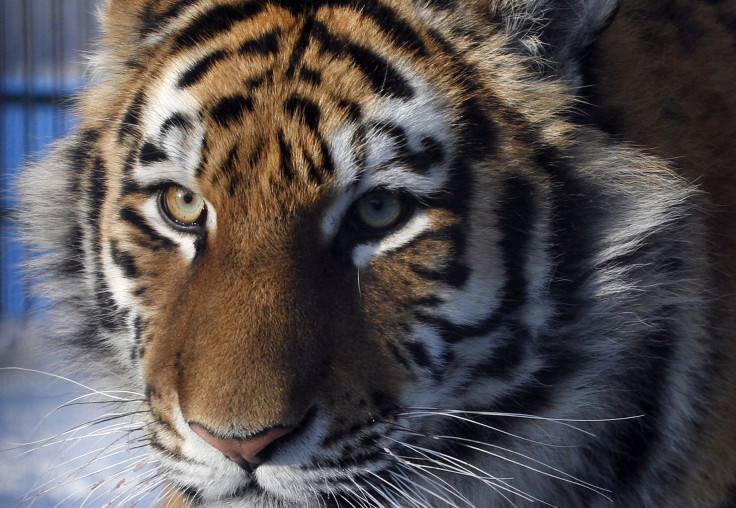Environmental Preservation In Northeast China Brings Siberian Tigers Back From Extinction

China isn’t exactly known for being the biggest advocate of animal rights. With scandals involving the poaching of sharks for their fins to make a traditional Chinese delicacy, China’s reputation among animal-rights advocates remains rocky. However, new reports are saying that Chinese preservation efforts are responsible for bringing the Siberian tiger back from the brink of extinction.
One herder, Liu Xiangqing, who lives in a border area between northeast China, Russia and North Korea, in China’s Jilin province, has seen the comeback of the near-extinct animals for himself. According to a report by the South China Morning Post, Liu has encountered a problem that he has never seen in the past: tigers were killing his farm’s calves. “In my whole life, I’d never seen a real tiger, but I knew it couldn’t be anything else,” 52-year-old Liu told the Post.
The resurgence of the Siberian tiger, the largest feline, is credited to the standing effort to preserve natural forestry and land in the northeastern areas of China, in addition to cracking down on hunting and trapping. The tiger, which can weigh as much as 300kg, or roughly 660 pounds, has distinct paw marks, or pug marks as they are commonly known, which are as big as melons. According to residents in the area, the marks have been seen in Chinese areas, along with more frequent cases of mauled livestock.
While the outlook for the Siberian tiger is much more optimistic than it was in the past, the official number of those still living in the wild in China is estimated to be between 18 and 22, according to Li Zhixing, who has been working on tiger protection in the area. Exact numbers have been difficult to determine because China does not have tracking tags on the tigers, but Li estimates that the number is closer to 40, and expects that it will continue to grow. “I personally think the number of tigers has doubled in the last decade and that the area populated by tigers has become much larger,” Li said.
Li says that campaigns inspired by Russian-side forest protection campaigns which began in the 1940s helped launch China’s similar efforts to restore deforested areas on the Chinese side of the border. According to the World Wildlife Fund, Russia has the largest population of Siberian tigers, estimated to be somewhere between 400 and 900 in the wild. Now, China is hoping their similar efforts in creating tiger-beneficial environments will result in a similar increase in numbers. “Russia has fewer people than China, so it’s a better place for tigers,” Li said. “But they are doing a lot of logging and burning off of agriculture fields after harvest, and the tigers don’t like that.” Because of this, Li says that this is also driving some of the tigers across to their border.
Though the Chinese still have a penchant for buying tiger parts, mostly from India, usually for medicinal purposes, wild tigers within the nation’s borders are protected by national hunting bans. Though Liu’s livestock are now in more danger, many in China revere the tiger as a sacred and respected animal. “There is a superstition here that a tiger will only attack you if you do something bad,” Li said. “Sometimes when people encounter a tiger, they don’t run, they just kneel and pray.”
© Copyright IBTimes 2025. All rights reserved.






















